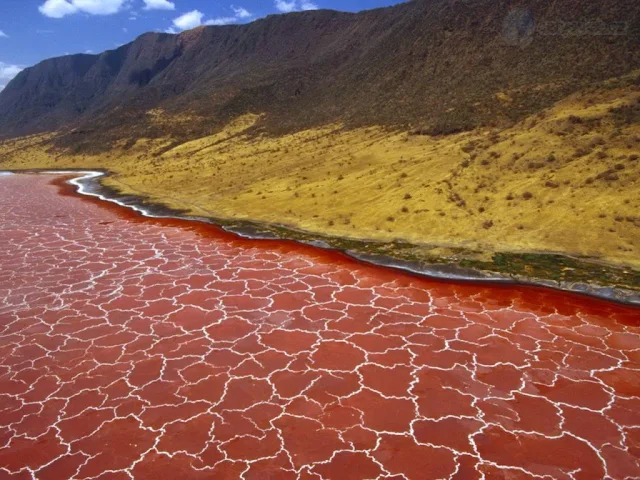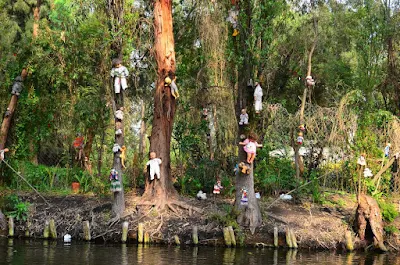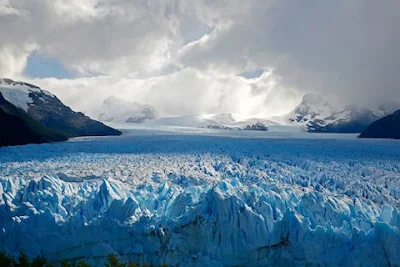Lake Natron is a salt or soda lake in Arusha Region in Tanzania. It is in the Gregory Rift, which is the eastern branch of the East African Rift The lake is within the Lake Natron Basin, a Ramsar Site wetland of international significance.
The lake is fed principally by the Southern Ewaso Ng'iro River, which rises in central Kenya, and by mineral-rich hot springs. It is quite shallow, less than three meters (9.8 ft) deep, and varies in width depending on its water level. The lake is a maximum of 57 kilometers (35 mi) long and 22 kilometers (14 mi) wide. The surrounding area receives irregular seasonal rainfall, mainly between December and May totaling 800 millimeters (31 in) per year. Temperatures at the lake are frequently above 40 °C (104 °F).
High levels of evaporation have left behind natron (sodium carbonate decahydrate) and trona (sodium sesquicarbonate dihydrate). The alkalinity of the lake can reach a pH of greater than 12. The surrounding bedrock is composed of alkaline, sodium-dominated trachytelavas that were laid down during the Pleistocene period. The lavas have significant amounts of carbonate but very low calcium and magnesium levels. This has allowed the lake to concentrate into a caustic alkaline brine.
The color of the lake is characteristic of those where
very high evaporation rates occur. As water evaporates during the dry
season, salinity levels increase to the point that salt-loving
microorganisms begin to thrive. Such halophile organisms include some
cyanobacteria that make their own food with photosynthesis as plants do.
The red accessory photosynthesizing pigment in the cyanobacteria
produces the deep reds of the open water of the lake and the orange
colors of the shallow parts of the lake. The alkali salt crust on the
surface of the lake is also often colored red or pink by the salt-loving
microorganisms that live there. Salt marshes and freshwater wetlands
around the edges of the lake do support a variety of plants.
Most animals find the lake's high temperature and its high and variable
salt content inhospitable. Nonetheless, Lake Natron is home to some
endemic algae, invertebrates, and birds. In the slightly less salty
water around its margins, some fish can also survive.
The lake is the only regular breeding area in East Africa for the 2.5 million lesser flamingos, whose status of "near threatened" results from their dependence on this one location. When salinity increases, so do cyanobacteria, and the lake can also support more nests. These flamingoes, the single large flock in East Africa, gather along nearby saline lakes to feed on Spirulina (a blue-green algae with red pigments). Lake Natron is a safe breeding location because its caustic environment is a barrier against predators trying to reach their nests on seasonally forming evaporite islands. Greater flamingoes also breed on the mud flats.
The lake has inspired the nature documentary The Crimson Wing: Mystery of the Flamingos by Disneynature, for its close relationship with the Lesser flamingoes as their only regular breeding area.
Two endemic fish species, the alkaline tilapias Alcolapia latilabris and A. ndalalani, also thrive in the waters at the edges of the hot spring inlets. A. alcalica is also present in the lake, but is not endemic.



























































